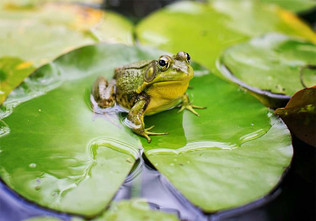Creating Your Own Frog Pond: A DIY Guide
Are you looking to bring a touch of nature's magic into your garden? One way to do so is by building your very own frog pond. Not only does a frog pond add charm and tranquility to your outdoor space, but it also provides a habitat for these fascinating amphibians to thrive. In this guide, we'll walk you through the steps of creating a frog pond, along with some frog pond ideas to inspire your project.
Why Build a Frog Pond?
Frogs are not only delightful to watch but also play a vital role in the ecosystem. They act as natural pest controllers, consuming insects such as mosquitoes and flies, thus helping to maintain a balanced ecosystem in your garden. By building a frog pond, you're not only creating a haven for these beneficial creatures but also contributing to the biodiversity of your surroundings.
Choosing the Right Location
Before you start digging, consider the location of your frog pond carefully. Ideally, it should be situated in a partially shaded area to prevent overheating during hot summer days. Additionally, make sure the spot receives some sunlight, as this will promote the growth of aquatic plants, which are essential for the frogs' habitat.
Building Your Frog Pond
Now that you've selected the perfect spot, it's time to start building your frog pond. Here's a step-by-step guide to help you get started:
- Mark the Area: Use a garden hose or rope to outline the shape and size of your pond. Keep in mind that a larger pond will support a greater variety of plant and animal life.
- Dig the Pond: Start digging within the outlined area, gradually creating a shallow basin with varying depths. Aim for a maximum depth of around 3 feet to accommodate both shallow and deep-water plants and a deeper area for the frogs to hibernate in the cold winter months.
- Add a Pond Liner: Once you've dug the pond, line the bottom and sides with a durable 45 mil EPDM pond liner made for fish ponds. Don't use roofing liners as they are created with other chemicals that are toxic to fish. Be sure to leave some excess liner around the edges to secure it in place. Typically, at least 12 inches will do around the perimeter.
- Create a Slope: To allow easy access for frogs and other wildlife, create a gentle slope on the edges of the pond. This will allow a way for the frogs and toads to exit the pond. If the edges are not sloped, toads will die in the pond and when you build a frog pond, you are also building it for whatever else may come to live there. So, be mindful of the edges.
- Fill with Water: After ensuring the liner is properly positioned, fill the pond with water. Use rainwater if possible, as tap water may contain chemicals harmful to aquatic life.
- Add Aquatic Plants: Introduce a variety of aquatic plants to your pond, including floating plants like water lilies, submerged plants such as hornwort, and marginal plants like pickerelweed. These plants not only provide shelter and food for frogs but also help oxygenate the water and filter out impurities.
- Wait for Nature to Take Its Course: Once your frog pond is complete, sit back and let nature take its course. In no time, you'll start attracting a diverse array of wildlife, including frogs, toads, dragonflies, and more.
- Add Aeration: Every pond should ideally be aerated to help prevent water stagnation and provide optimal oxygen throughout the body of water year-round.
Frog Pond Ideas to Enhance Your Design
Looking to add some extra flair to your frog pond? Here are a few ideas to spark your creativity:
- Water Features: Consider incorporating a small fountain or waterfall into your pond design. Not only will it add visual interest, but the sound of running water will also create a soothing ambiance. It will also attract more wildlife to your frog pond.
- Rock and Log Features: Arrange rocks and logs around the edges of your pond to provide additional basking spots for frogs. These natural elements will also blend seamlessly with your garden landscape.
- Night Lighting: Install subtle lighting around your pond to enjoy its beauty even after the sun goes down. Solar-powered lights are a great eco-friendly option that won't disturb nocturnal wildlife.
Frog Pond DIY Tips
For those who enjoy getting their hands dirty, here are some DIY tips to make the process of building your frog pond a breeze:
- Use Recycled Materials: Get creative and repurpose materials such as old bathtub liners, livestock watering troughs, or even large ceramic pots to create your pond.
- Opt for Native Plants: Choose native aquatic plants that are well-adapted to your region's climate and soil conditions. Not only will they require less maintenance, but they'll also attract local wildlife.
- Maintain Balance: Keep an eye on your frog pond to ensure it remains in balance. Remove any excess algae, trim overgrown plants, and replenish water as needed to maintain optimal water quality.
- Be sure to have your frog pond child-proof and safe. Contact local authorities and get required permits, if needed.
Conclusion
Building a frog pond is not only a rewarding DIY project but also a meaningful way to invite nature into your backyard. By following these simple steps and incorporating some creative ideas, you can create a thriving habitat for frogs while enhancing the beauty of your outdoor space. So why wait? Roll up your sleeves and start building your own little slice of amphibian paradise today!

